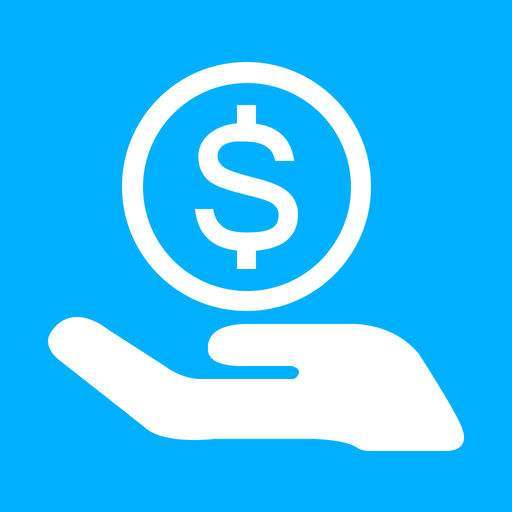Linux文件实时同步,可实现一对多
发布时间:2014-09-05 13:38:23作者:知识屋
Linux文件实时同步,可实现一对多
说明:该功能服务端安装sersync2,客户端安装rsync,原理就是服务端主动推送设定目录下的所有更新的文件到各个客户端rsync接收。
rsync大家都知道,是Linux自带的数据同步工具,而sersync2是google大神的开源项目http://code.google.com/p/sersync/
下面给出具体的实现步骤,实现的详细原理大家可以去上面的开源网址,上面说的很详细
客户端配置,首先系统安装rsync工具,
[php]
[root@yo57 ~]# vi /etc/rsyncd.conf
uid=www
gid=www
max connections=36000
use chroot=no
log file=/var/log/rsyncd.log
pid file=/var/run/rsyncd.pid
lock file=/var/run/rsyncd.lock
[yowebtongbu]
path=/Data/code/adserver
comment = yo web files
ignore errors = yes
read only = no
hosts allow = 192.168.0.0/24
hosts deny = *
[root@yo57 ~]# /usr/bin/rsync --daemon --config=/etc/rsyncd.conf
[root@yo57 ~]# ps -ef|grep rsyn
root 1070 29923 0 17:04 pts/4 00:00:00 grep rsyn
root 32069 1 0 16:54 ? 00:00:00 /usr/bin/rsync --daemon --config=/etc/rsyncd.conf
写入开机启动项
[php]
[root@yo57 ~]# vi /etc/rc.local
#!/bin/sh
#
# This script will be executed *after* all the other init scripts.
# You can put your own initialization stuff in here if you don't
# want to do the full Sys V style init stuff.
touch /var/lock/subsys/local
ulimit -SHn 51200
/usr/local/nagios/bin/nrpe -c /usr/local/nagios/etc/nrpe.cfg -d
/usr/local/nginx/sbin/nginx
/etc/init.d/php_fpm start
/usr/bin/rsync --daemon --config=/etc/rsyncd.conf
服务器端
[root@10 local]# tar -zxvf sersync2.5.4_64bit_binary_stable_final.tar.gz
[root@10 local]# cd sersync2.5.4_64
[root@10 sersync2.5.4_64]# ls
confxml.xml sersync2
[root@10 sersync2.5.4_64]# vi confxml.xml
修改这一段即可
<localpath watch="/Data/code/adserver">
<remote ip="192.168.0.27" name="yowebtongbu"/>
<!--<remote ip="192.168.8.39" name="tongbu"/>-->
<!--<remote ip="192.168.8.40" name="tongbu"/>-->
</localpath>
进行一次完整同步
[root@10 sersync2.5.4_64]# ./sersync2 -r
写入脚本并放入开机启动项
[root@10 sersync2.5.4_64]# cat /usr/local/sbin/sersync.sh
#!/bin/bash
PATH=/bin:/sbin:/usr/bin:/usr/sbin:/usr/local/bin:/usr/local/sbin:~/bin
export PATH
SDATH="/usr/local/sersync2.5.4_64"
SSTART="./sersync2 -r -d"
SPID=`ps -ef|grep 'sersync2'|grep -v 'grep'|awk '{print $2}'`
function_start()
{
echo -en "/033[32;49;1mStarting sersync2....../n"
echo -en "/033[39;49;0m"
if [ -t ${SPID} ]; then
cd ${SDATH}
${SSTART} > /dev/null 2>&1
printf "Serync2 is the successful start!/n"
else
printf "Sersync2 is runing!/n"
exit 1
fi
}
function_stop()
{
echo -en "/033[32;49;1mStoping sersync2....../n"
echo -en "/033[39;49;0m"
if [ -t ${SPID} ]; then
printf "Sersync2 program is not runing!/n"
else
kill ${SPID}
printf "Sersync2 program is stoped/n"
fi
}
function_restart()
{
echo -en "/033[32;49;1mRestart sersync2....../n"
echo -en "/033[39;49;0m"
if [ -t ${SPID} ]; then
cd ${SDATH}
${SSTART} > /dev/null 2>&1
else
kill ${SPID}
sleep 1
cd ${SDATH}
${SSTART} > /dev/null 2>&1
fi
printf "Sersync2 is the successful restart!/n"
}
function_kill()
{
killall sersync2
}
function_status()
{
if ! ps -ef|grep 'sersync2'|grep -v 'grep' > /dev/null 2>&1
then
printf "Sersync2 is down!!!/n"
else
printf "Sersync2 is running now!/n"
fi
}
if [ "$1" = "start" ]; then
function_start
elif [ "$1" = "stop" ]; then
function_stop
elif [ "$1" = "restart" ]; then
function_restart
elif [ "$1" = "kill" ]; then
function_kill
elif [ "$1" = "status" ]; then
function_status
else
echo -en "/033[32;49;1m Usage: sersync2 {start|stop|restart|kill|status}/n"
echo -en "/033[39;49;0m"
fi
[root@10 sersync2.5.4_64]# vi /etc/rc.local
#!/bin/sh
#
# This script will be executed *after* all the other init scripts.
# You can put your own initialization stuff in here if you don't
# want to do the full Sys V style init stuff.
touch /var/lock/subsys/local
#/etc/init.d/lemp start
/usr/local/nginx/sbin/nginx
/etc/init.d/php_fpm start
/usr/local/zabbix/sbin/zabbix_agentd
/usr/local/sbin/sersync.sh start
整个实现就这么简单,以后主服务器上面/Data/code/adserver目录下有新建、删除、修改文件或文件夹(包括下层递归)的的数据会自动推送到下面的各个服务端对应目录下,如果临时不需要该功能,kill掉服务端即可,操作完以后在手动开启服务端(此时客户端不用动)
(免责声明:文章内容如涉及作品内容、版权和其它问题,请及时与我们联系,我们将在第一时间删除内容,文章内容仅供参考)
相关知识
-

linux一键安装web环境全攻略 在linux系统中怎么一键安装web环境方法
-

Linux网络基本网络配置方法介绍 如何配置Linux系统的网络方法
-
Linux下DNS服务器搭建详解 Linux下搭建DNS服务器和配置文件
-
对Linux进行详细的性能监控的方法 Linux 系统性能监控命令详解
-
linux系统root密码忘了怎么办 linux忘记root密码后找回密码的方法
-
Linux基本命令有哪些 Linux系统常用操作命令有哪些
-
Linux必学的网络操作命令 linux网络操作相关命令汇总
-

linux系统从入侵到提权的详细过程 linux入侵提权服务器方法技巧
-

linux系统怎么用命令切换用户登录 Linux切换用户的命令是什么
-
在linux中添加普通新用户登录 如何在Linux中添加一个新的用户
软件推荐
更多 >-
1
 专为国人订制!Linux Deepin新版发布
专为国人订制!Linux Deepin新版发布2012-07-10
-
2
CentOS 6.3安装(详细图解教程)
-
3
Linux怎么查看网卡驱动?Linux下查看网卡的驱动程序
-
4
centos修改主机名命令
-
5
Ubuntu或UbuntuKyKin14.04Unity桌面风格与Gnome桌面风格的切换
-
6
FEDORA 17中设置TIGERVNC远程访问
-
7
StartOS 5.0相关介绍,新型的Linux系统!
-
8
解决vSphere Client登录linux版vCenter失败
-
9
LINUX最新提权 Exploits Linux Kernel <= 2.6.37
-
10
nginx在网站中的7层转发功能
























